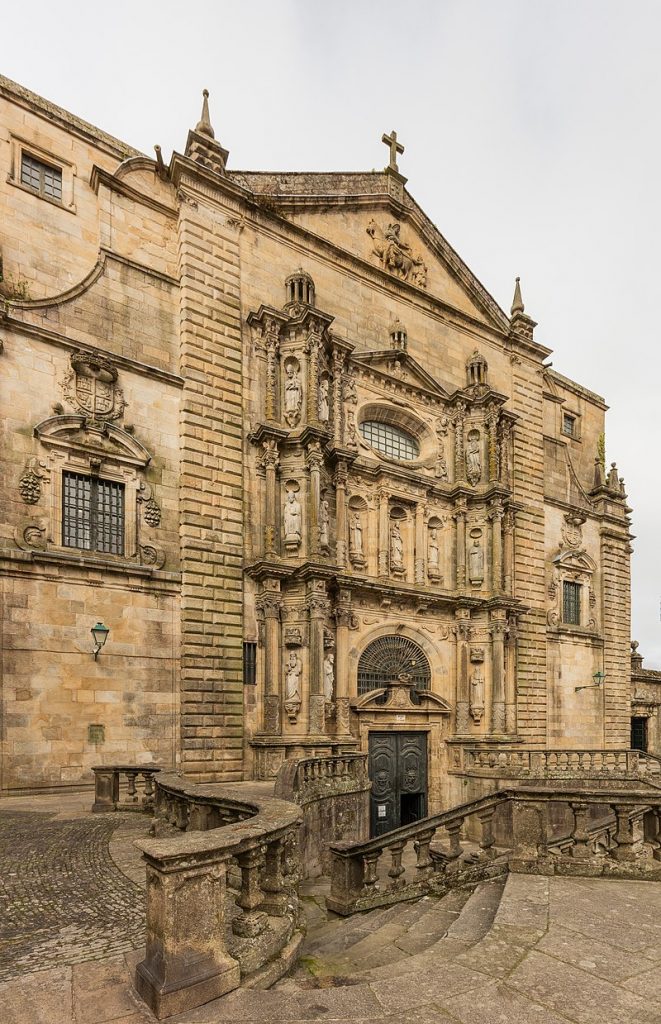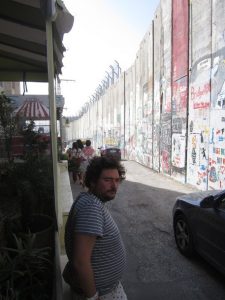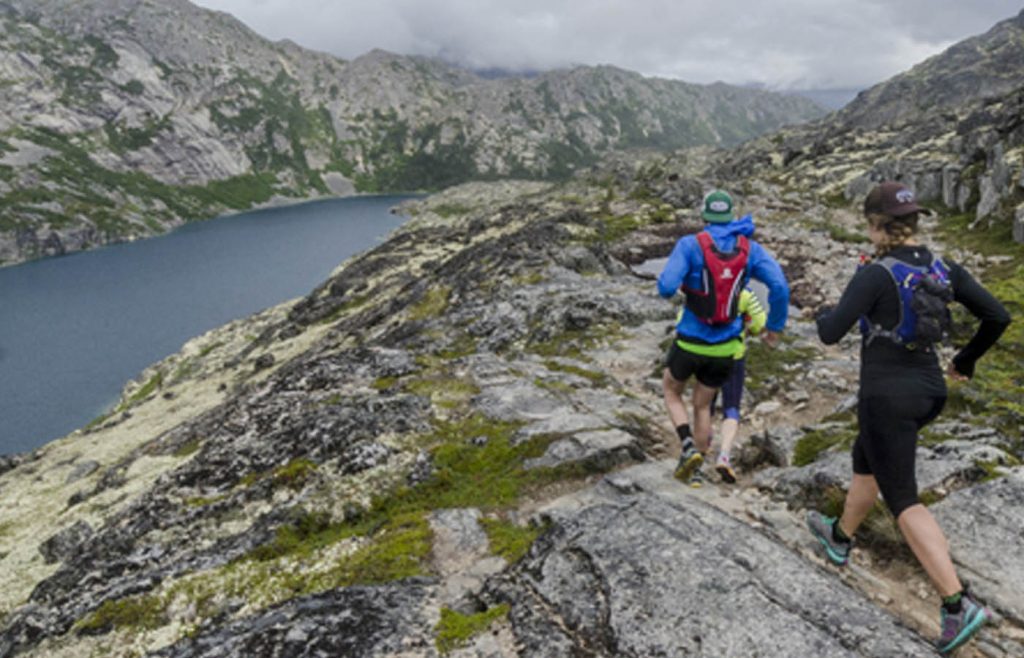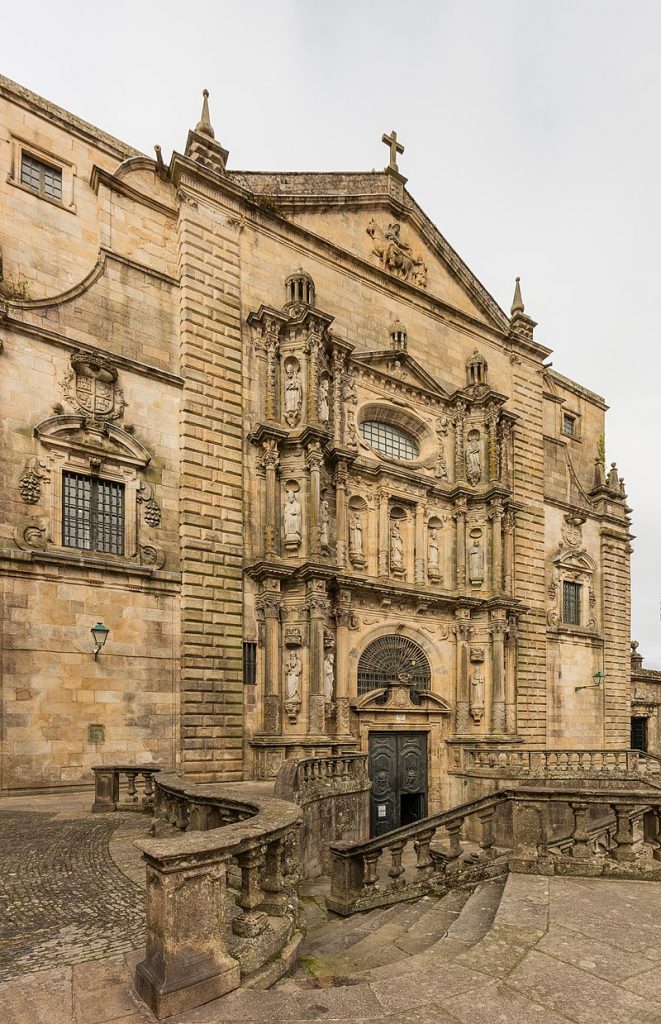* * * *

* * * *
Saturday, August 24, is the Feast day for St. Bartholomew, also called Bartholomew the Apostle. I’ll write more about him in a bit, but first I’d like to talk about my upcoming pilgrimage, in a return to Spain. In Transfiguration – 2024 I talked about some of my past journeys, leading “to a personal transformation,” but here I’ll talk about the one coming up in September.
The Camino de Santiago … is a network of pilgrims’ ways or pilgrimages leading to the shrine of the Apostle James in the cathedral of Santiago de Compostela in Galicia in northwestern Spain, where tradition holds that the remains of the apostle are buried.
But this year, instead hiking to Santiago my hiking companions and I will hike from there. Out on the Camino Finisterre to “the end of the known world.” That is, we’ll be hiking to Cape Fisterra, a route “unique because it is the only trail starting in Santiago de Compostela and takes pilgrims west to the stunning Atlantic coast of Galicia.”
We’ll meet up in Madrid, then take a train for two nights in Santiago. Needless to say, over the course of the month we’ll stay in many different places, but here I’ll focus on where we stay two nights – and where I’ve never been. First, two nights in Fisterra (“world’s end”), after hiking five days. Then two more days hiking to Muxía, where we spend two nights. From there we take a bus to A Coruña, and stay there two days, followed by another bus ride to Ferrol, for another two days off. Then we “start hiking again,” for another eight days, heading back to Santiago. All of which means we’ll enjoy way more “two nighters” than usual on past Camino hikes. (Which I define as at the end of each day you look forward to a warm bed, hot shower and a cold beer.) And more bus rides for that matter, but we’ll end up hiking close to the usual 150 miles.

Now, about those two-nighters. I’ve been to Finisterre; we drove there by rental car after an earlier hike to Santiago. (See a photo of that rocky “end of the world” outcrop in the post, James, “the Pilgrim’s Saint” – 2024.) The first “never been there” two-nighter is in Muxía, known for its beaches and its active fishing industry. “Muxía is part of the ‘Costa da Morte‘ or ‘Costa de la Muerte’ (i.e., the ‘Coast of Death’) … because of the large number of shipwrecks along its rocky shore.” (Wikipedia.) Also, local legend says that St. James the Greater tried to “Christianize” local inhabitants but without any luck. Then the Virgin Mary appeared to St. James “to comfort him. The Celtic stones near the church are now said to be remains of the Virgin Mary’s stone boat.” (Seen above left, the “Pedra d’Abalar (rocker stone) in front of Nosa Señora da Barca church in Muxía.”)
So much for Muxía. The next qualifying two-nighter is A Coruña, the provincial capital of the province of A Coruña. As for things to see, “In addition to the Tower of Hercules, one of the symbols of the city, the peninsula on which the Old Town sits is home to a fascinating Romanesque ensemble of medieval streets, squares and churches.” There’s also a museum of fine arts, an archaeology and history museum, and yet another “Church of Santiago (A Coruña).”
Next up, after another long bus ride, comes Ferrol. It features a harbor which, “for depth, capacity and safety, has few equals in Europe. The entrance is very narrow, commanded by forts, and may even be shut by a boom.” It’s close to the Cape Prior Lighthouse:
The [modern] lighthouse has been constructed on a high coastal clifftop, some 14 kilometres (8.7 mi) northwest of Ferrol [but] the geographers of antiquity took notice of the granite protuberance off the northwesternmost point of Iberia which, as described by Strabo and other classical geographers, was used even then as a reference point for the end of the Iberian peninsula… A set of steps descends from the lighthouse down the steep cliff to a viewpoint overlooking the Atlantic Ocean.
(Wikipedia.) All of which will be a part of our upcoming 2024 pilgrimage to Spain, where – hopefully – at the end of each day I can look forward to that warm bed, hot shower and a cold beer. (As it says in Psalm 84:4, “Happy are those … whose hearts are set on the pilgrim’s way.”)
But I did say I’d talk some about St. Bartholomew the Apostle, so here goes. There’s lots of gory detail in the links below, but mostly he’s famous for being flayed alive, and the massacre that happened on his feast day in 1572, during the French Wars of Religion:
The St. Bartholomew’s Day massacre … in 1572 was a targeted group of assassinations and a wave of Catholic mob violence, directed against the Huguenots… Though by no means unique, it “was the worst of the century’s religious massacres.” Throughout Europe, it “printed on Protestant minds the indelible conviction that Catholicism was a bloody and treacherous religion.”
And a personal note: My French ancestors – Huguenots, or Calvinist Protestants – came to America to get the hell away from such ongoing battles of religion and “who’s going to hell.” Yet irony of ironies, this year I’m going back “whence my ancestors came,” for much the same reason they came here. For a bit of spiritual peace and quiet – at least for the month I’m in Spain.
To wrap thing up we’ll end our 2024 hiking pilgrimage with yet another two-nighter, this time at the Monastery of San Martiño Pinario back in Santiago. As noted, “There we will do penance for whatever sins may remain, in that our rooms will be stark. ‘Old monks cells – a bed, desk and tiny bathroom.'” Where no doubt I will get good and “Jesus-upped,” ready to face whatever strife may come in the upcoming October and November, after I get back home…
* * * *

* * * *
The upper image is courtesy of Fisterra, Muxía, and a Sunset at the End of the World, in a blog by Trevor Huxham. It has lots of useful information on this particular hike, including that by tradition, on reaching Fisterra, “pilgrims would burn their stinky clothes and bathe in the ocean.” (Which we probably won’t do.) Also that “you can often find some sun-bleached t-shirts tied to crosses or tattered hiking boots with sentimental quotes plastered nearby.”
The Book of Common Prayer reference: The “corporate-mystical” prayer is on page 339, the post-communion prayer for Holy Eucharist, Rite I.
“Feast days” are designated days on the liturgical (church) calendar “set aside to commemorate events, saints, or doctrines that are important in the life of the Church. These can range from Solemnities, which are the highest-ranking feast days like Easter and Christmas, to optional memorials that celebrate lesser-known saints.” Feast Days: Celebrating the Church’s Calendar.
Re: “Hiking close to the usual 150 miles.” My rough calculations show a total of around 140 miles, with pack. (Not counting “saunters” around stopover towns without a pack.)
For more on our proposed route, see e.g. Camino Finisterre from Santiago to Muxia:
This stunning region of Galicia is known as the ‘Costa da Morte’ famous for its wild beauty, seafood, and interesting legends… From Santiago to Cee, the Camino is inland, but from Cee to Finisterre (Fisterra) and to Muxia, it follows the coast. Quiet villages and hamlets, remote farmland, and unspoiled countryside await on this Camino route to the sea cliffs of the westernmost point in Spain… After Fisterra (Finisterre), we recommend you continue your journey along the craggy coastline of Atlantic Galicia to the fishing village of Muxía, famed for its sanctuary by the ocean and ‘magic’ stones.
See also Fisterra, Muxía, and a Sunset at the End of the World, and Tourism in A Coruna. What to see. Tourist information | spain. And for the “more spiritual” part of this post I borrowed from or referred to On St. Bartholomew – and “his” Massacre (2017), and St. Bart 2023 – and more mass-shooting massacre, and links therein.
Re: “There we will do penance,” etc. Borrowed from On James, “the Pilgrim’s Saint” – 2024.
The lower image is from Wikipedia on Monastery of San Martiño Pinario, “photo by Diego Delso.”
* * * *





